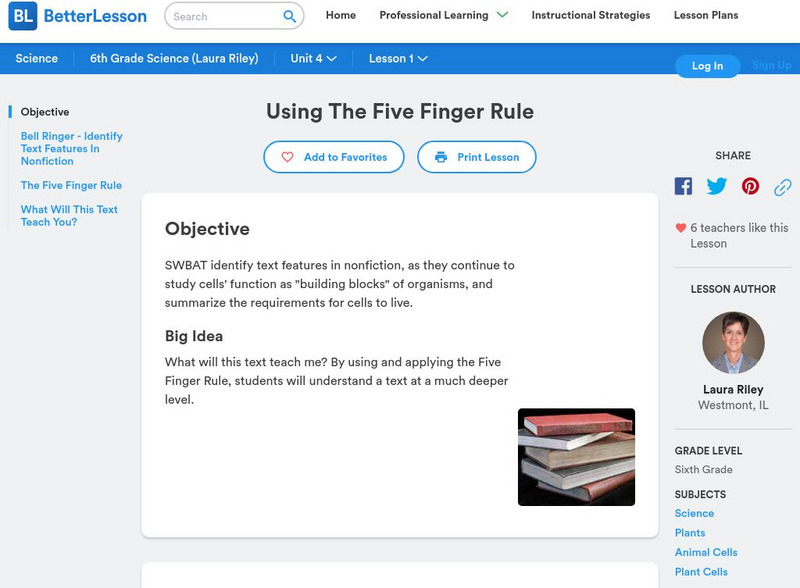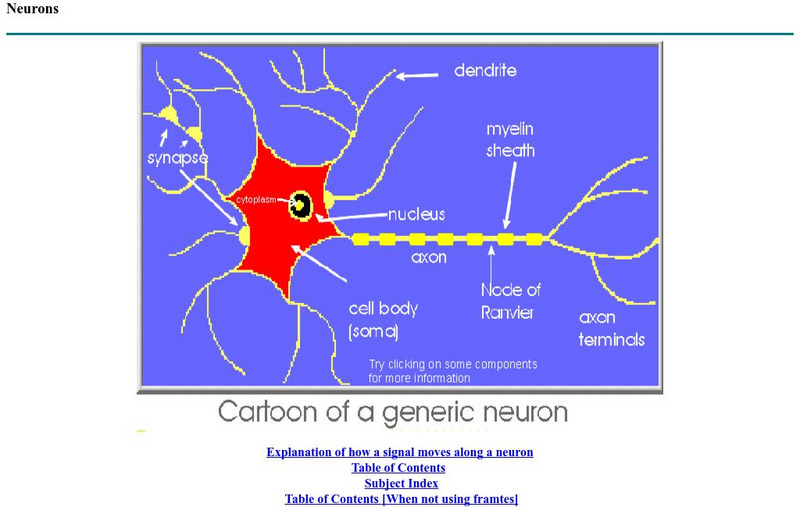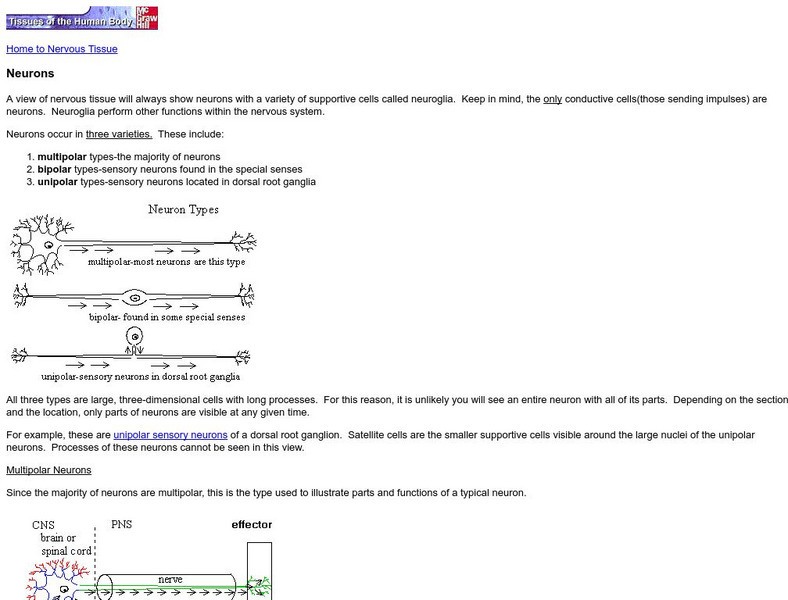Hi, what do you want to do?
Khan Academy
Khan Academy: Prokaryotes Questions
This is a ten-question quiz pertaining to Prokaryotes.
National Health Museum
Access Excellence: Wolf Pack in a Bottle: Dna Simulation
This lesson plan can be used to illustrate the principle of electrophoresis without the equipment. Paper chromatography can be used to separate dye just like electrophoresis will separate DNA. The lab also covers DNA analysis for an...
Khan Academy
Khan Academy: Tension in the Muscles
This passage will test your knowledge on the force of tension in muscles using this five-question quiz.
Curated OER
Micscape Article: Paramecium
Excellent article on a unicelluar organism, the paramecium. Includes details on its environment, paramecium types, and environmental importance.
Curated OER
Micscape Article: Paramecium
Excellent article on a unicelluar organism, the paramecium. Includes details on its environment, paramecium types, and environmental importance.
Better Lesson
Better Lesson: Using the Five Finger Rule
Learners identify text features in nonfiction, as they continue to study cells' function as building blocks of organisms, and summarize the requirements for cells to live.
City University of New York
The World of Cells: Viruses
Alive or not, viruses are introduced in an easy to follow essay that explains many basic concepts.
Cosmo Learning
Cosmo Learning: Introduction to Biology
A collection of video lectures from an introduction to biology course taught at the Massachusetts Institute of Technology. The course teaches "biological function at the molecular level" with thirty-five lectures. Lectures vary in length...
CK-12 Foundation
Ck 12: Biology: Prokaryotes Study Guide
Review the structure, function, and diversity of prokaryotic cells.
York University
York University: Neuron Graphic
York University provides a graphic which depicts the general structure of the neruron.
Other
Dalhousie University: Antibodies
A very good explanation of what antibodies are and what their functions are. Includes a list of the different types of antibodies.
OpenStax
Open Stax: Protein Synthesis
Most structural components of the cell are made up, at least in part, by proteins and virtually all the functions that a cell carries out are completed with the help of proteins. This site explains protein synthesis, including that of...
BiologyWise
Biology Wise: Fluid Mosaic Model
The fluid mosaic model provides an explanation of the structure of biological membranes. It explains why a membrane can perform all of its functions, e.g., permeability and adhesion. This resource describes the main components of a cell...
BiologyWise
Biology Wise: Mitochondrial Matrix
Discusses the structure of the matrix inside a mitochondrion and how hundreds of concentrated enzymes are held there. The matrix takes part in mitochondrial functions such as the Krebs cycle, the electron transport chain, ATP synthesis,...
Texas Instruments
Texas Instruments: Numb3 Rs: Close Encounters
Based off of the hit television show NUMB3RS, this lesson has students explore how "closely connected" a network structure is. Framed in the context of a terrorist cell, students must find which setups would allow organizations to still...
Other
Net Wellness: Skin Care
Contains information about the following: how the skin functions, skin structure, the epidermis, the stratum corneum, the middle epidermis, the basal layer, epidermal cell summary, the dermis, aging and its effects on the skin, natural...
McGraw Hill
Mc Graw Hill: Neurons
Introduction to neuron structure, function, and classification. Provides simple diagrams of neurons conducting an impulse and microscope images of nerve cells.













